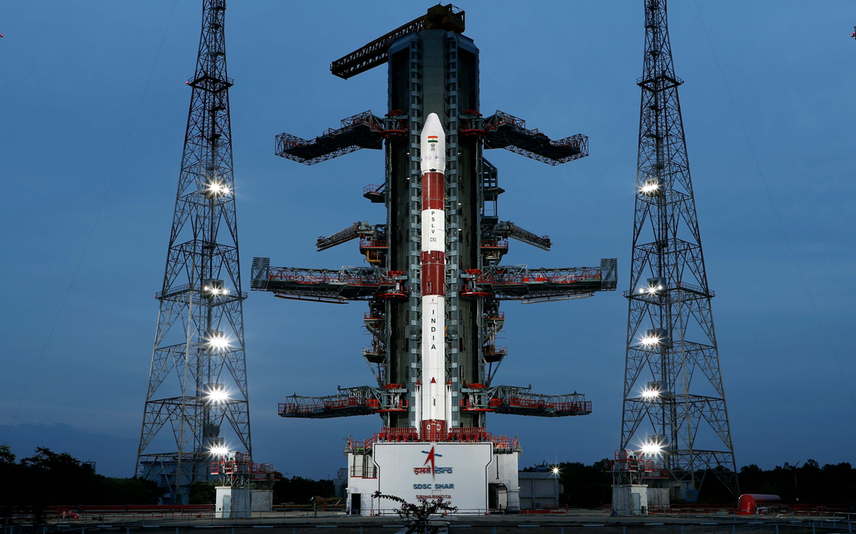

After a space shuttle re-enters the atmosphere, the most crucial part is the landing, where an immense force is exerted on the ground resulting in the crumpling of the device's legs. ISRO approached the Department of Mechanical Engineering and Applied Mechanics of Visvesvaraya National Institute of Technology (VNIT) to study this impact and develop an aluminium structure that can handle the pressure.

The new structure would be robust enough to endure the energy of the impact, stabilise the landing and ensure minimal damage. The project needs to be submitted within the next two years as per the doctrine of the Indian Space Research Organisation (ISRO) says.
Previously, ISRO had initiated the Yukti Sanchita scheme through which ingenious institutions were invited to participate in extraordinary projects. During the programme in 2011, VNIT submitted a project titled 'Design and Demonstration of Empty and Foam Filled Honeycomb Structures for Energy Absorption During Crash/Impact', which was approved by ISRO at last.
Professor of Applied Mechanics, Dr Manmohan Goel, commented: "ISRO was loaded with several projects, plus there were 4-5 teams from other parts of India which had submitted their projects as we did. We feel proud to announce that the ISRO has selected our project on which we are now working."
India is the sixth most prominent producer of automobiles internationally but ranks only ten in the global vehicular market because it doesn't have an indigenous testing protocol to check the safety of vehicles.
The Bharat New Vehicle Safety Assessment Programme (BNVSAP) has been specifically designed for India to scrutinise the performance of forthcoming automobile designs against certain safety threats.
Many engineers and researchers have created some bio-based lightweight structures with extreme endurance and absorption strength to materialise the concept. These new structures are proven to be more efficient than the conventional platforms used during ground impact. The scientists have incorporated multiple compounds in forming the entire landing structure, like multi-cell tubes, metal or non-metal foam-filled tubular structures, corrugated tubes, conical tubes, lattice structures and sandwich structures.
"Among all the structures we chose is of Honeycomb core is a series of hexagonal cross-sectional thin tubes which showed the maximum strength in minimum material cost," Dr Manmohan Goel clarified.
The researchers discovered the importance of aluminium honeycombs during their study and decided it could be considered more efficient than the usual metal foam or other hollow structures in regard to the absorption quality. Aluminium honeycomb panels feature superlative bending capabilities yet are considerably lighter in weight. The only issue faced with aluminium is the non-ferrous metal is not that rigid to absorb the impact of a foreign object falling from space.
Here the phenomenal minds of the scientists come into play when they decide to add foam material to the core of the honeycomb so that it becomes strong enough to withhold a menacing crash alongside harbouring a longitudinal or lateral fatigue load.
"Hence, present investigators are very curious to explore the response of conventional aluminium honeycomb and foam-filled aluminium honeycomb structures against crash load. Two distinct foam materials, i.e., aluminium foam and polymeric foam, are, proposed to be considered to fill in the aluminium honeycomb core," explained Dr Goel.
The R&D, when complete, will project detailed studies of the load-carrying capacity in terms of peak load and mean load, from where measurable attributes can be logged. Moreover, the study will reveal local and global deformation, failure modes and specific energy absorption of the conventional honeycomb or the foam-filled aluminium structures. This can help the scientists with a wider calculation to weigh in and make their discovery more efficient. A new enhanced protocol can be laid to derive designs of standard lightweight structures that can be used during a space vehicle's ground landing.
Prof Sunil Bhat, the Coordinator, narrated: "Receiving project is very prestigious in a sense every single minute detail is taken into account. Our team had to undergo tough tests; only then could we get the project. ISRO Scientist K Venkateshwaram has been with us since the inception of the project. He will be with us till we submit the project after two years."
The project has another renowned collaborator with added expertise in the field, MNIT, Jaipur. Other mentionable members of the team are VNIT professors DR Saurabh Towari, Payal Shirbhate and Vaibhav Jivane. Students are also working relentlessly for a favourable outcome that creates a standard in the space sector.



Responses






